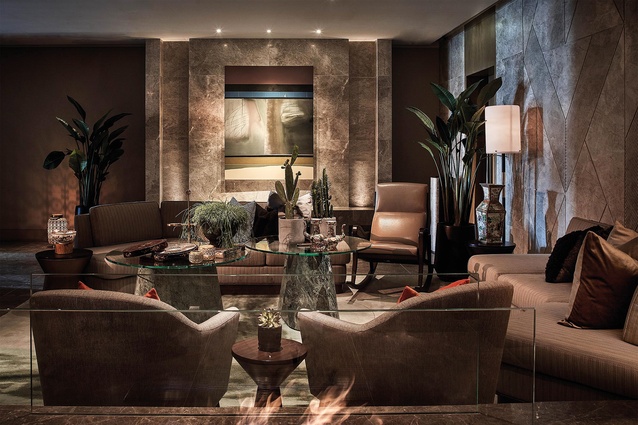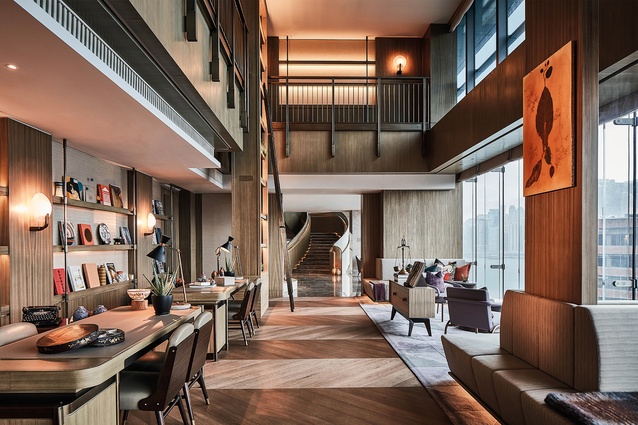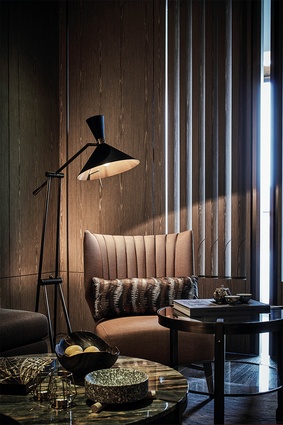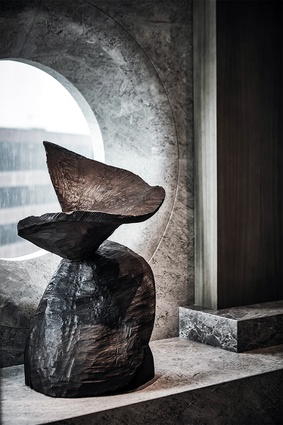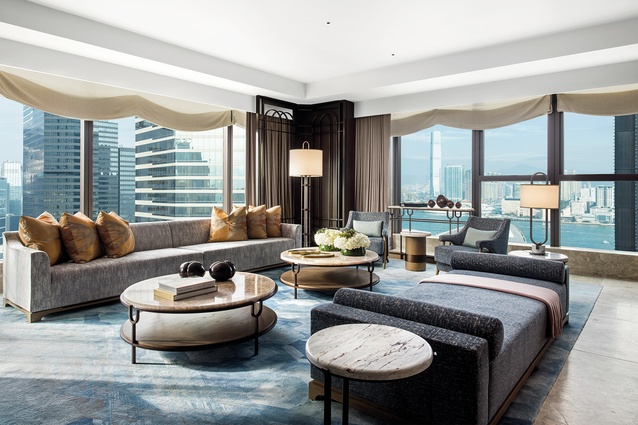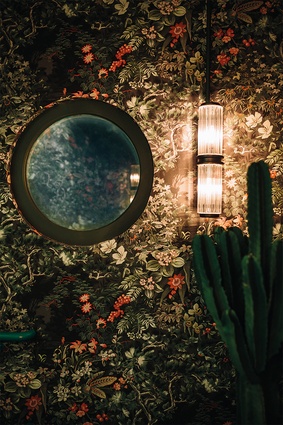Hotels in flux: Room service
Founder of Hong Kong’s studio AFSO André Fu has been a pioneer of blending the residential and hotel typologies. In the sixth installment of our Hotels in flux series, he talks about his trajectory and unique take on high-end hospitality.
André Fu doesn’t give too much away. You have the sense that behind his mild-mannered eloquence lies a sensitivity for space that’s difficult to explain. Perhaps that’s why I never fully appreciated an André Fu interior until I stepped inside one – or two, I should say.
The Hong Kong native was responsible for two hospitality spots within the LTW-designed Four Seasons Hotel in Seoul, which was completed in 2015. Kioku Japanese restaurant and Michelin-starred Yu Yuan Chinese restaurant gave me two tastes of Fu’s holistic and detail-oriented design methodology. To put it simply, his spaces don’t just look good, they feel good, too.
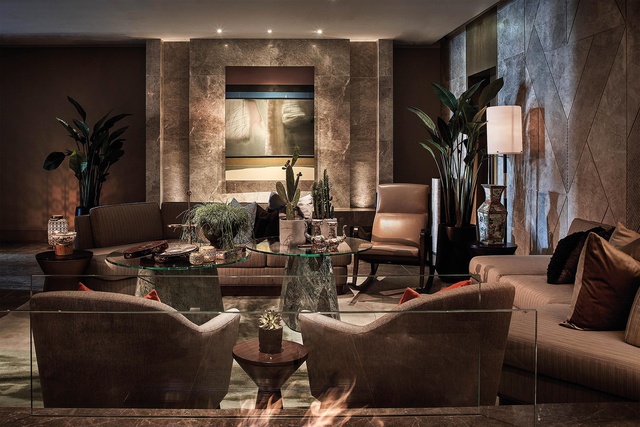
At the age of 14, Fu left Hong Kong for the UK. He remained there for 14 years, following up a Bachelor of Arts at Cambridge University with a master’s degree in architecture. “It was a family preference for me to study in England,” says the architect. “My elder sisters went there for their educations, so I followed in their footsteps.” After graduating, Fu returned to Hong Kong and set up AFSO studio in 2000.
The designer and his 20-strong team now work in various cities with diverse cultures. “In many ways, my work represents my way of life and my upbringing,” he says. “I was raised with influences from the East and the West – it was very transversal. I became interested in how design can communicate this crossing of cultures. It’s something we now navigate on a daily basis.”

While the studio works on a range of typologies – everything from art spaces to retail, and with the likes of Louis Vuitton and Cos – AFSO has made a name for itself in the hotel industry. The accolade is the result of one unexpected key project, The Upper House, which opened in 2009 and has become one of Hong Kong’s world-renowned hotels. Until then, Fu had never worked on a hotel.
Instead of playing it safe by sticking to pre-established tropes, he decided to challenge the whole idea of hospitality by creating a small, intimate environment reminiscent of a private home. (Although, perhaps Fu was playing it safe in at least one sense; he may not have designed a hotel at that point but he had designed residences.) The Upper House has no lobby or official reception desk. Instead, guests check in via iPad: a feature that’s found its way into many hotel projects since.
“Hotels are tricky things,” says Fu. “They’re very extreme. You’re working with a macro concept but, also, with micro details: the things people touch and interact with on an intimate level. My mind is constantly juggling between the two.” Nothing is more important, he says, than clearly visualising how a person walks into the space and interacts with the room itself in any given moment.
The sentiment reflects Fu’s desire to create a holistic experience through design: one that works on many different levels. The lighting, mood, flowers, uniforms, collateral: how does each element unite with others to support the overarching story? “Even though I’m not the full driver for every single component of a hotel, my role is to work with everyone around me to ensure they maintain the narrative we established at the beginning. It’s a very prolonged process to bring many different disciplines and collaborators together.”
Every new project is about understanding the client and the brand – and then telling their story. From there, Fu often begins the design process with hand drawings. “When I’m really focused on drawing,” says Fu, “my mind and my hand are in sync with each other to translate my ideas into visual form.” It’s not a frivolous pursuit; his sketches typically translate well into reality. And, at a time when “everyone is sitting down at the computer trying to do things digitally, it’s precious to find time to draw with your own hand,” says Fu.
Once the sketches are done, the materials are selected and the visual narrative is defined and presented, the team initiates a more in-depth dialogue with everyone involved. Over the course of a hotel’s four- to five-year construction period, AFSO works with a number of local creatives to bring in the flavour of the place. Customised furniture, carpet, lighting and fabrics have basically become the standard. This affinity with objects also led to the 2015 launch of André Fu Living, a collection of homeware and lifestyle products that reflect the designer’s cross-cultural nature.
Fu envisions an even deeper level of customisation making its way into hotel design. “Technology has obviously become more advanced and social media is helping to expose people to more design. When it comes to hospitality and hotels, people are becoming increasingly analytical and critical. They’re more aware of what suits them personally. They can reach out for experiences that are more customised and bespoke, particularly in the high-end market. Ultimately, design is a response to the world in which we’re living and the lifestyles we lead. Even though there are obvious evolutions in the way we live – think of trends like co-working and co-living – the heart of an experience will remain the same. Comfort, for example, will still be a core value of a well-designed space.”
K11 Artus in Hong Kong (2019) is one such sign of the times, highlighting the nowness of hybrid spaces. Somewhere between a hotel and a serviced apartment building, it was designed to cater for both long stays and those who want to touch down for just a few nights. “These hybrid projects give rise to the question of what exactly defines a hotel experience. They’re more interesting and provocative.”
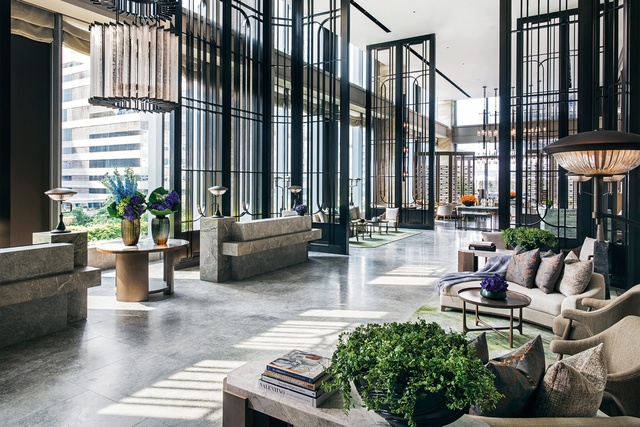
Also in Hong Kong, the St. Regis hotel (2019) is a very different story. “St. Regis is a legendary heritage brand,” says Fu, “but we’re putting the project into the context of today. How can we reinvent a heritage story for contemporary conditions?” Fu’s answer was to reflect upon the historic moments in his home town – to “go beyond the superficial” and really see the city. “I decided to tap into Hong Kong’s minute details: the cobbled pavements, the engraved details on old police stations. I’ve tried to distil and reinterpret certain elements within the walls of the hotel.”
Hong Kong may be a recurring location on the AFSO roster, but the firm has delivered projects in the likes of Singapore, New York, London and Aix-en-Provence. Also, a hotel in Kyoto is scheduled to open later this year. “I’m intrigued by what I discover about a city and how its culture influences the design process,” says Fu. “And I don’t mean culture in just a visual sense. How does the culture influence the customs, the meaning of certain geometries and patterns, and the way people build and realise a project? All of these influences are why I still find the creation of hotels fascinating. What’s even more fascinating is that hotels are frames through which visitors see a city. A hotel window is one of the last windows they’ll look out before they leave. The world I create needs to embellish the sense of place.”



